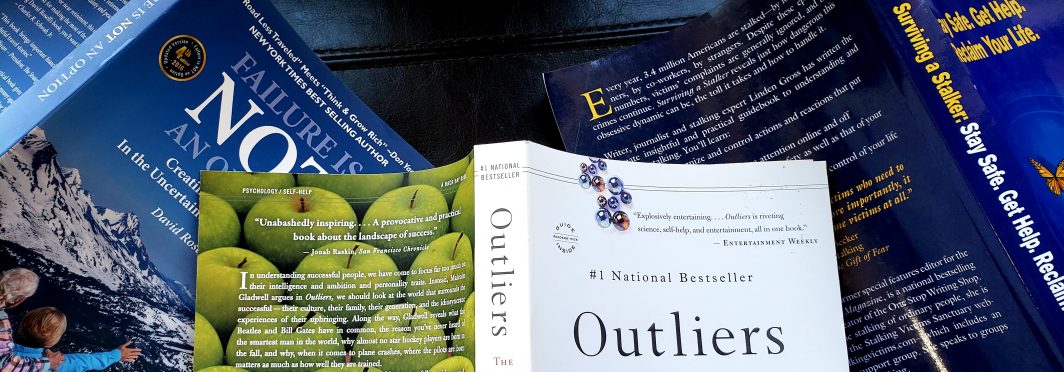Most writers know that their back cover blurb needs to convince readers to buy the book. As a result, a lot of blurbs focus on why the book is so great instead of addressing why the reader might be interested in the topic. You can see the exact same mistake on website after website. The person to whom the service or product (in this case your book) is directed is virtually ignored, so they don’t stick around. Not exactly a big surprise.
Your back cover copy needs to convince a prospective reader to crack the book and keep reading. You can do that by hitting them where they live. That means that you either:
- Nail their pain point and promise them the solution they’ve been seeking.
- Tease them by providing just enough of your premise to pique their curiosity to the point where they need to know more.
The back cover copy for my book Surviving a Stalker delivers on that first point:
Every year, 3.4 million Americans are stalked by former partners, by co-workers, by strangers. Despite these epidemic numbers, all too often victims’ complaints continue to be ignored and the crimes continue. Surviving a Stalker reveals just how dangerous this obsessive dynamic can be, the toll it takes and how to handle it.
Pain point identified? Check.
Solution promised? Check.
My writing coach client and friend David Rosell used that same pain point/solution formula in his first book’s back cover blurb:
Endless books exist on how to accumulate wealth and how to get out of debt. However, few resources teach what to do once you have reached the top, even though you are faced with unique and potentially devastating risks as you begin the second half of your financial journey. This book was written to fill that gap. Through an unexpected melding of travel and family stories coupled with financial survival tips, Failure Is Not an Option will lay out the eight fundamental risks every retiree faces and help you create more certainty in the uncertainty of retirement. In the process, it will help you achieve far greater financial peace of mind.
Kindlepreneur’s Dave Chesson offers a similar three-step formula. In his words:
- Introduce the problem
- Outline how you propose to solve it (bullet points are good)
- Tell the reader how their lives will be better after reading your book
Note the use of this formula as well as bullet points in the blurb example of Jen Sincero’s You Are a Badass, which Chesson provides in his “How to Create a Back Book Cover Blurb:“
You Are a Badass is the self-help book for people who desperately want to improve their lives but don’t want to get busted doing it.
In a refreshingly entertaining how-to guide … Jen Sincero serves up 27 bite-sized chapters … helping you to:
- Identify and change the self-sabotaging beliefs and behaviors that stop you from getting what you want.
- Create a life you totally love. And create it NOW.
- Make some damn money already. The kind you’ve never made before.
By the end of You Are a Badass, you’ll understand why you are how you are, how to love what you can’t change, how to change what you don’t love, and how to use The Force to kick some serious ass.
If your book isn’t directed toward solving a problem, you’ll want to opt for the intrigue approach to your back cover blurb. Malcolm Gladwell’s Outliers does that perfectly:
In understanding successful people, we have come to focus far too much on their intelligence and ambition and personality traits. Instead, Malcolm Gladwell argues in Outliers, we should look at the world that surrounds the successful—their culture, their family, their generation, and the idiosyncratic experiences of their upbringing. Along the way, Gladwell reveals what the Beatles and Bill Gates have in common, the reason you’ve never heard of the smartest man in the world, why almost no star hockey players are born in the fall, and why, when it comes to plane crashes, where the pilots are born matters as much as how well they are trained.
Don’t you want to know more? I’ve read the book, and I’m tempted to crack it again.
Whichever approach you use for your back cover blurb, you’ll want to:
- Make sure your tone is similar to the one of your book.
- Keep the language simple and your blurb on the short side, so people who are skimming can get quick sense of what your book is about.



Sorry, comments are closed for this post.